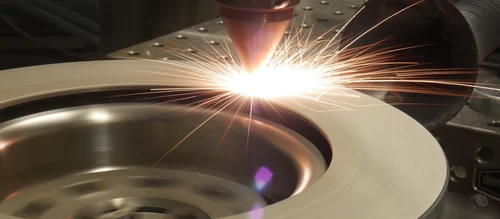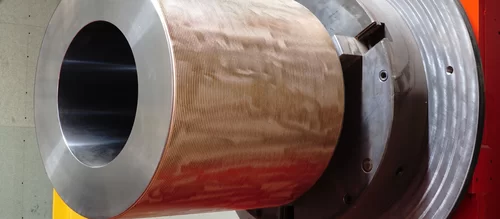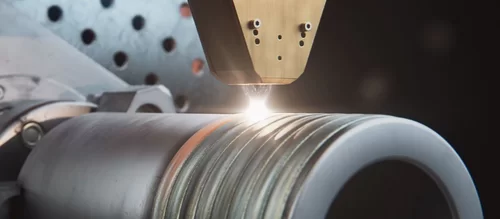
Press Release: Brake Dust Reduction According to Euro 7
A Laserline developed coating process taking under a minute enables cost-effective mass production
Meeting all specifications with diode-laser-based brake disc claddings
In order to counteract the health hazards posed by particulate matter, the EU has for the first time also included dust from braking systems within the new vehicle emission standard, Euro 7. Diode-laser-clad hard coatings enable reliable compliance with all specifications, reducing brake dust with a maximum particle size of PM10 by up to 90 percent. The series-ready cladding process developed by Laserline enables cost-sensitive mass production for all market segments.
Mülheim-Kärlich, March 7, 2023 – One of the greatest health hazards in urban areas is particulate matter emissions from road traffic. Particulates are suspected of causing allergies as well as respiratory, cancer and cardiovascular diseases. Combustion engine emissions are not the only source of particulates, as disc and pad wear in vehicular braking systems itself generates about a quarter of the total. In the draft Euro 7 vehicle emission standard –due to come into force in 2025 – the EU Commission takes account of this fact and for the first time sets specific limits for particulate emissions from braking systems. These limits equally apply without exception to electric vehicles, the latter thus being affected for the very first time by the EU regulations on pollutant emissions from motor vehicles. Automobile manufacturers are now faced with the universal challenge of significantly reducing particulate emissions from braking systems.
One of the most effective measures for reducing brake dust emissions is to apply hard coatings by using a diode-laser-based cladding process, where said claddings offer long-term protection against abrasion and corrosion. The component of health-endangering particulate matter as generated by vehicle braking – tested at PM10, so 10 µm and below –can thus be reduced by up to 90 percent. The new Euro 7 emission standards are expected to specify an overall average of 7 mg/km of PM10 particulate matter, and this can be reliably met. Fortunately, in order to apply these coatings, both the standard gray cast iron material used for brake discs as well as the conventional production processes remain unchanged – a supplementary production step applies the cladding after completion of the original brake disc.
Together with its technology partners, diode laser specialist Laserline has developed the process setup of this procedure to series maturity and has additionally ensured integration suitability within Industry 4.0 production environments. Using diode lasers with OPC UA interfaces and up to 22 kW output power, powder-based high-speed cladding processes are utilized, and in some cases leading to a process time of less than one minute per brake disc. Coupled with appropriate use of materials to yield very effective and at the same time cost-effective claddings, mass production of brake disc cladding becomes affordable for all automotive market segments, even for vehicles in the medium and lower segments. Lastly, further cost considerations indicate specifying a higher power laser in order to achieve a higher throughput, which saves on production space by reducing the space requirements and in turn ultimately significantly reduces the relative investment per disc.
More detailed technical information on Euro 7 compliant diode-laser-based brake disc cladding is available at https://www.laserline.com/en-int/the-brake-for-less-fine-dust/. Among other things, a white paper is also available for download and providing detailed information on the coating process and the materials used. In addition, interested parties can also find process and explanatory videos as well as abundant additional information on Laserline diode laser technology.




